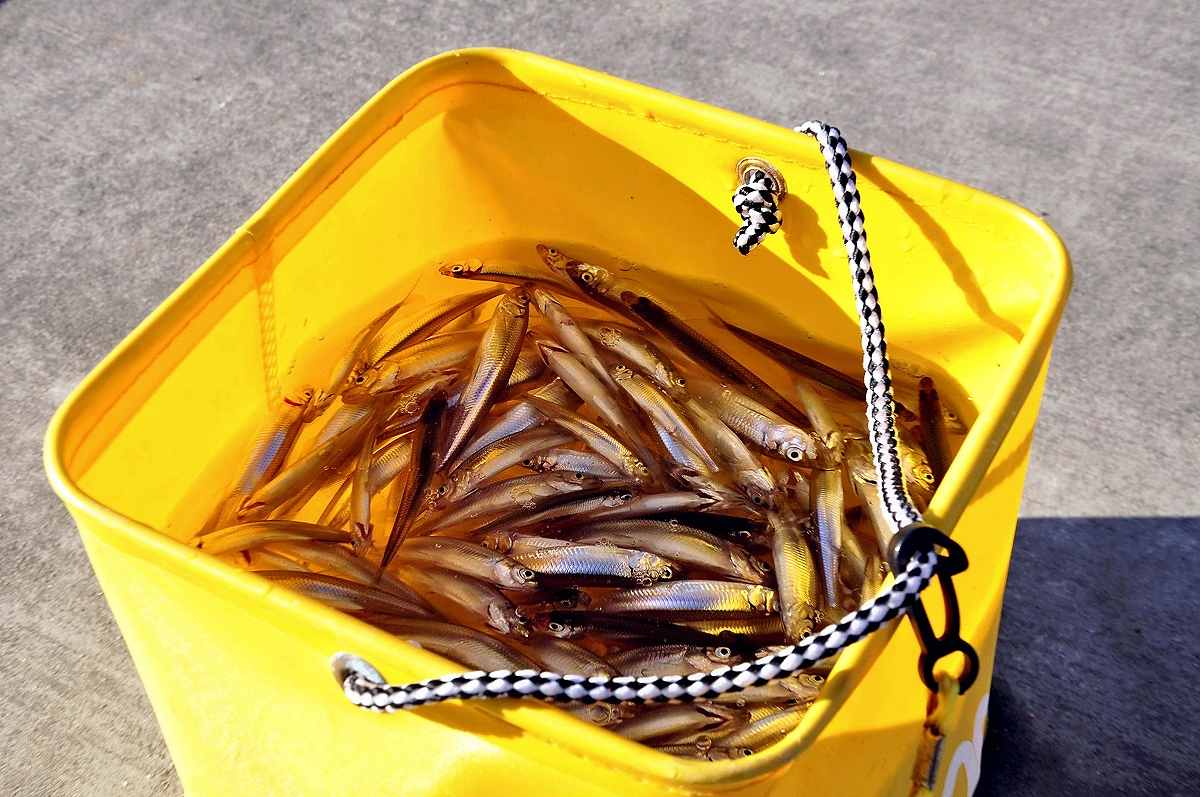
People fish for wakasagi Japanese smelt at Lake Inawashiro in Fukushima Prefecture.
21:00 JST, March 12, 2023
FUKUSHIMA — Lake Inawashiro, located in the center of Fukushima Prefecture, recently has seen a surge in the number of wakasagi Japanese smelt. This has been attributed to a change in the lake’s water, which used to be highly acidic. In the past 30 years, it has become almost neutral, leading to an increase in nutrients in the water.
On a sunny winter day at the lake, more than 10 people took to the pier to fish for smelt.
“Sometimes I catch more than 500 smelt a day,” a man from Koriyama, Fukushima Prefecture, said. The lake has been known for good catches in the past three years.
Smelt used to arrive at Lake Inawashiro through the about 20 rivers that run into it, but the fish could not reproduce there, according to Gyo Kawata, director of the Fukushima Prefectural Inland Water Fisheries Experimental Station.
“Although there had already been carp and crucian carp, which can live in acidic water, there were very few smelt about 30 years ago,” he said. “However, we have seen more varied marine life in the past 10 years.”
The water in the lake had been around a pH of 5, where a pH of 7 is neutral and a smaller number indicates stronger acidity. Since smelt cannot tolerate such levels of acidity, their eggs cannot hatch. Even though local fishers released eggs, those efforts had always resulted in failure.
The current pH of the lake is near neutral at 6.8, and the hydrogen ion concentration, a source of acidity, is less than one-sixtieth of what it was 30 years ago. Plankton and aquatic plants have proliferated, creating an environment conducive to the growth of fish and shrimp, and water clarity is higher than it was 30 years ago.
According to the Fukushima Prefectural Center for Environmental Creation, the amount of sulfuric acid flowing into the lake from the surrounding rivers has decreased. The volcanic activity of Mt. Adatara is believed to be a factor, but the cause of the drop is not well understood at this time.
The local fisheries cooperative is considering ensuring a certain number of smelt in the lake by releasing eggs, among other activities. They plan to release smelt eggs next spring.
“We want to protect the environment of the lake by managing this precious resource properly,” said Satoshi Usuki, 63, head of the cooperative.

Smelt caught at Lake Inawashiro in Fukushima Prefecture are seen.
Related Tags
"Features" POPULAR ARTICLE
-

Sanrio to Open Museum in Yamanashi Pref. Dedicated to Founder, Exhibits Include Hello Kitty, Other Characters
-

Autumn Foliage Surrounds Visitors to Tokyo’s Showa Kinen Park
-

My Daughter No Longer Speaks to Me, But I Want to See Her and My Grandchild
-

Kumamoto: Public Bath Refurbished as Library Where You Can Chat, Take Photos
-

Frozen Vegetables: Demand Rises for Convenient, Tasty Domestic Produce
JN ACCESS RANKING
-

Tokyo Economic Security Forum to Hold Inaugural Meeting Amid Tense Global Environment
-

Keidanren Chairman Yoshinobu Tsutsui Visits Kashiwazaki-Kariwa Nuclear Power Plant; Inspects New Emergency Safety System
-

Imports of Rare Earths from China Facing Delays, May Be Caused by Deterioration of Japan-China Relations
-

University of Tokyo Professor Discusses Japanese Economic Security in Interview Ahead of Forum
-

Japan Pulls out of Vietnam Nuclear Project, Complicating Hanoi’s Power Plans




























